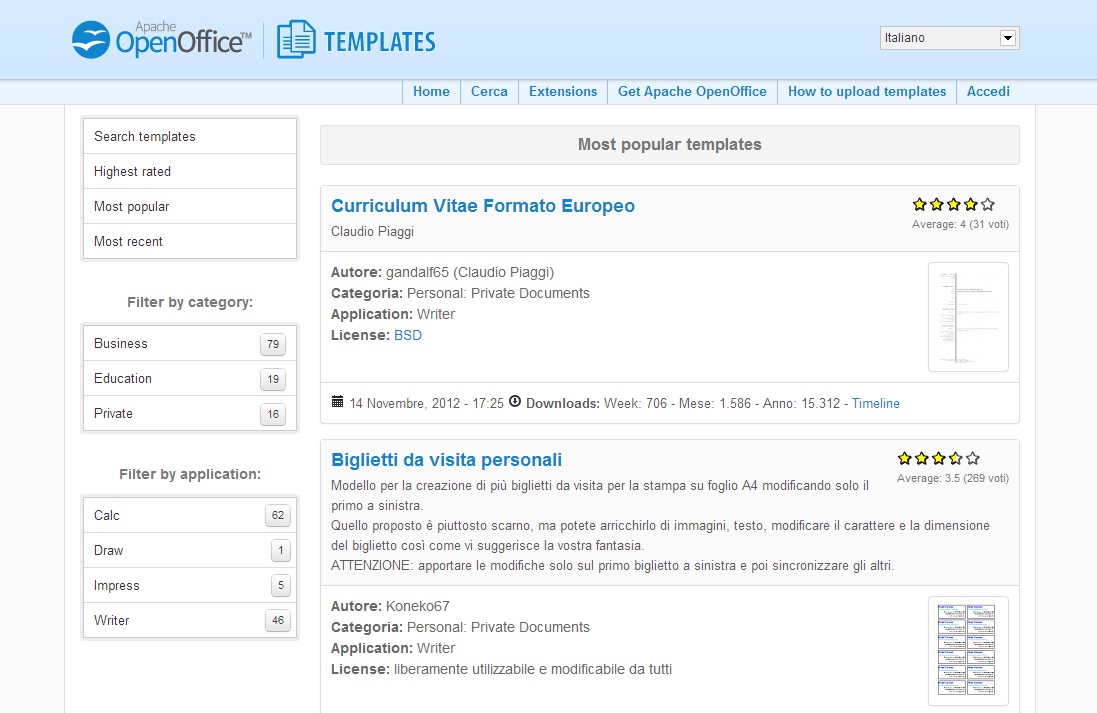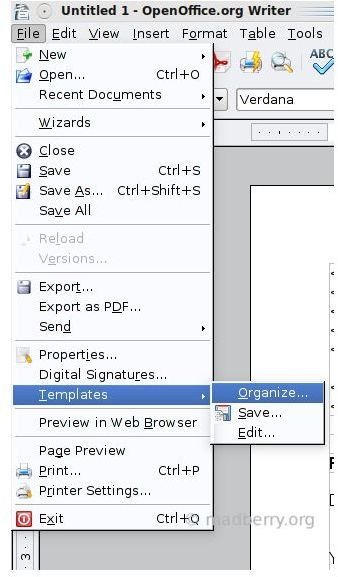

You can use it if a contact is open, as long as the contact is also the selected item. This macro works with the selected contact. This version of the macro will use a template to send a message to the selected contact. Set newItem = Application.CreateItemFromTemplate(template) Template = "C:\Users\Diane\Templates\email.oft" Template = "C:\Users\Diane\Templates\template1.oft" If you want to use a macro to open different templates, assign the template path to a variable and pass the variable to the macro, like this: See Customize the QAT if you need help customizing the QAT.


OPENOFFICE TEMPLATES FOLDER LOCATION HOW TO
See How to use the VBA Editor for complete instructions to use the VB Editor. Press Alt+F11 to open Outlook's VB Editor then copy and paste this macro into ThisOutlookSession. Set newItem = Application.CreateItemFromTemplate("c:\path\template.oft") The solutionĬreate a macro that replicates opening a template from the Choose Form dialog using the Application.CreateItemFromTemplate method: These templates need to be opened using the Choose Form dialog. Note: if the template contains custom fields, the customizations will be disabled and the template will be blank. Additionally, opening a template hyperlinked to a toolbar button in Outlook 2007 brings up a security dialog. To create a button on the toolbar that will open a template in Outlook 2010 and up, you need to use a macro as it does not support hyperlink buttons found in older versions of Outlook. Use this registry value with Outlook 2010 and newer if you add files to Outlook's Shortcut navigation pane. See Disable the Unsafe Hyperlink Warning when Opening Attachments for the instructions to disable the warning dialog and the Open or Save dialog. To disable the warning message, you need to set a registry key. If you prefer to use a button on Outlook's toolbar, you can use a macro to open the template. To copy it to an Outlook folder, drag it to the desired folder. To pin a template, drag it from the template folder at C:\Users\%username%\AppData\Roaming\Microsoft\Templates and drop on the taskbar button. Recently used templates that are not already pinned may be listed on the Outlook icon's right-click menu. Templates containing scripts or some controls must be opened using the Template dialog.Įmail templates that are pinned to the Outlook button on the taskbar are accessed by right-clicking on the Outlook button or you can copy the template to a folder in your Outlook data file. Pinned TemplatesĪll email templates and some calendar and contacts templates can be opened using these methods. To use your new template, select: File -> New -> Templates and Documents, highlight the new template folder and template name, then click OK.If the template does not contain controls that require you to open it from the Template folder, you can store the template in other locations, including the Documents folder or Desktop pin it to the Outlook icon on the taskbar, or copy it into a folder in your Outlook data file. This should make the template show up in the expanded folder view of the folder you selected. Select (highlight) the template file and click 'Open'. A new folder will appear in the box on the left side of the dialog. To create a new folder, select Commands -> New. (You can either put your templates in this folder or create a new folder. In the dialog that appears, choose 'My Templates'.From the menu bar, select: File -> Templates -> Organize.When your file is completely customized, save any changes and note the location where your file is stored.įollow these steps to make your template easily available: You can make your own text document, presentation, drawing file, or any file type. The first step is to make your template file.


 0 kommentar(er)
0 kommentar(er)
